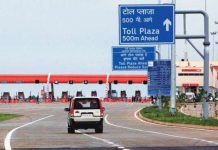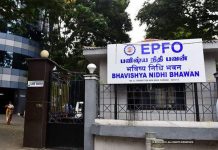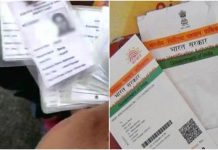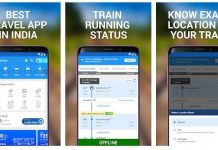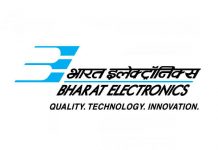FASTag to Become Mandatory For Vehicles: Tech Behind The Tag And How it Works.

Earlier this month, the Road Transport and Highways Minister Nitin Gadkari announced that FASTags will become mandatory for all vehicles from December this year. This means that any vehicle, private or commercial, which has the FASTag will be able to swiftly make contactless payments at toll plazas on national highways and be on their way. FASTags are part of the National Electronic Toll Collection (NETC) program developed by the National Payments Corporation of India (NPCI). But what exactly is a FASTag and how does it work?
A FASTag is essentially a tag that you attach to the windshield of your car, from the inside. This is Radio-frequency Identification (RFID) enabled and is linked with the registration details of your vehicle. As you drive though any toll plaza, there will be dedicated lanes that have FASTag readers installed overhead—and as your vehicle passes beneath them, the RFID code is detected, read, the necessary amount deducted from the prepaid balance and your journey through the toll plaza is authenticated. All without you having to stop, interact with a human being at a toll plaza or having to pay cash. “FASTags would enable all vehicles pay toll fee digitally, while providing convenience of faster movement across toll plazas. This in turn would help in significantly eliminate long queues at toll plazas with consequent saving in fuel and time. FASTags would also enable toll payments across State and district highways and even for parking in cities in the near future. This would help commuters in seamless movement across city parking to State to national highways,” says Ravi Mathur, CEO of GS1 India.
What is RFID? This is the wireless communication standard that reads the data that is encoded in tags or labels, by a reader device specifically made for that purpose. The tags have an integrated circuit and an antenna (though you may not be able to see either) that create the wireless communication method. There are two types of tags—active that require battery power constantly and passive, which wake up only when a reader wants to read some data. The FASTags have the passive type tags. These systems are designed to collect data pertaining to identification, movement and tracking of a particular object or thing, and input that data into the digital systems without the need for any human involvement.
Each tag and car pairing works with the GS1 unique identification numbers, which are encoded in the FASTags. That way, each vehicle is identified in a standardized and common manner that is understood by the digital payments systems deployed by state and central governments, the Traffic Police, insurance companies and toll collection authorities. If the same method is also activated for payment for parking as well as for paying for fuel fill-ups, the same standards will be followed by the municipalities and private operators as well.
What is the idea behind the FASTags? The government and the authorities have multiple things in mind, as far as the advantages are concerned. The first is the reduced handling of cash, which falls perfectly within the move to make as many retail payments electronic as possible. The second is reduced cash handling by the users, the concessionaire as well as the authorities running toll plazas. The third is to reduce the rush and waiting times at toll plazas across India. That in turn also helps reduce congestion, fuel consumption and therefore the pollution as well.
But how do you get these FASTags to work for you?
The first step is to buy a FASTag for your car. You can either physically buy one at certain toll plazas across India, by carrying your identification as well as the vehicle registration documents with you. This is a mandatory KYC process. Alternatively, and this could perhaps be simpler as well—you could buy one on Amazon.in or approach certain banks for these FASTags. The banks that currently offer FASTags include HDFC Bank, ICICI Bank, State Bank of India, Kotak Mahindra Bank, Axis Bank as well as the Airtel Payments Bank and Paytm Payments Bank. The advantage of buying the FASTag from the bank where you have your savings or salary account is that they can pre-link it with your bank account for easy recharge later.
Interesting enough, there seem to be different prices for the FASTag depending on which vendor you choose to buy from. If you buy it from Paytm for example, the FASTag will cost you Rs 500. This includes Rs 100 for the tag, Rs 250 as refundable security deposit and Rs 150 as the first recharge for your FASTag. The minimum threshold amount for the Paytm issued tag is also Rs 150. If however you decide to buy from HDFC Bank, the tag costs you Rs 400—this includes Rs 100 for the tag, Rs 100 as reissuance fee and Rs 200 as security deposit. Incidentally, HDFC Bank has Rs 100 as the minimum threshold for your account to remain active. That is not all. There are cash backs as well every time you use this. For instance, HDFC Bank says “you can avail a cashback of 2.5% on all National Toll payments using FASTag in FY 2019-20.” Paytm also says that users will get 2.5% Cashback on all National Highway Toll payments for FY 2019-20. FASTag issuers come up with these offers from time to time.
Then there is the question of recharging the balance on the FASTag. You can log in to the payment system of the bank which has issued the FASTag and make the recharge from your bank account. Or if you bought it from Paytm, you recharge your linked Paytm account and the balance shall be deducted from that every time you pass through a toll plaza on a national highway. You can also download the My FASTag app (free for Android on the Google Play Store; still not available for Apple iPhone) and recharge your FASTag via the unified payments interface (UPI) there.
The online NHAI FASTag has been conceived in a DIY (Do-It-Yourself) concept wherein a customer can self-activate it by entering customer and vehicle details in My FASTag mobile app. Thereafter, the customer will have to link the tag to an existing bank account of his/her choice,” the Ministry of Road Transport and Highways said in an official statement released in May, when the FASTag was made available on Amazon India.
According to the official data shared by the government, and reported by the All India Radio, more than 52 lakh FASTags have already been issued till date. The use was FASTags till now was voluntary, for the sake of convenience.

